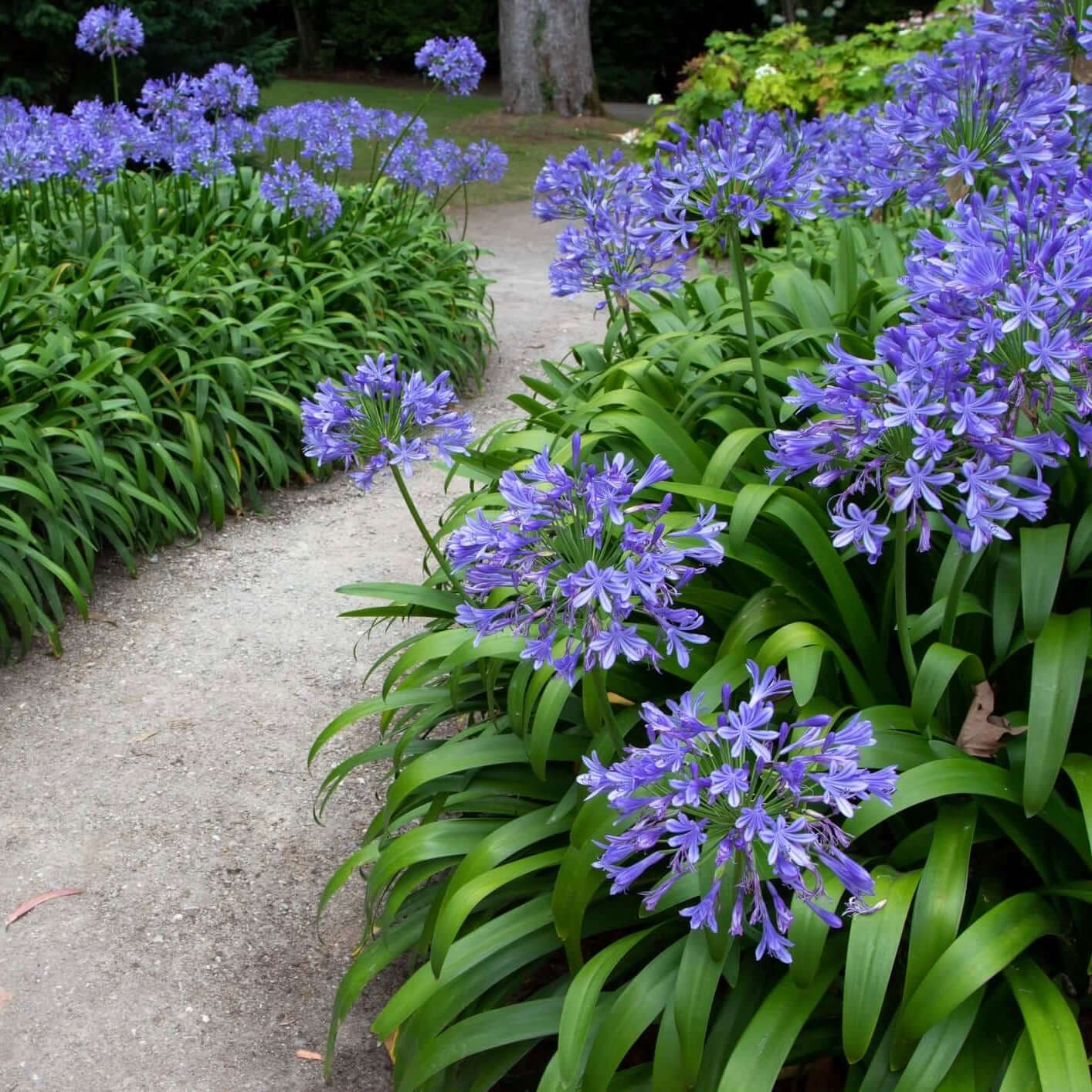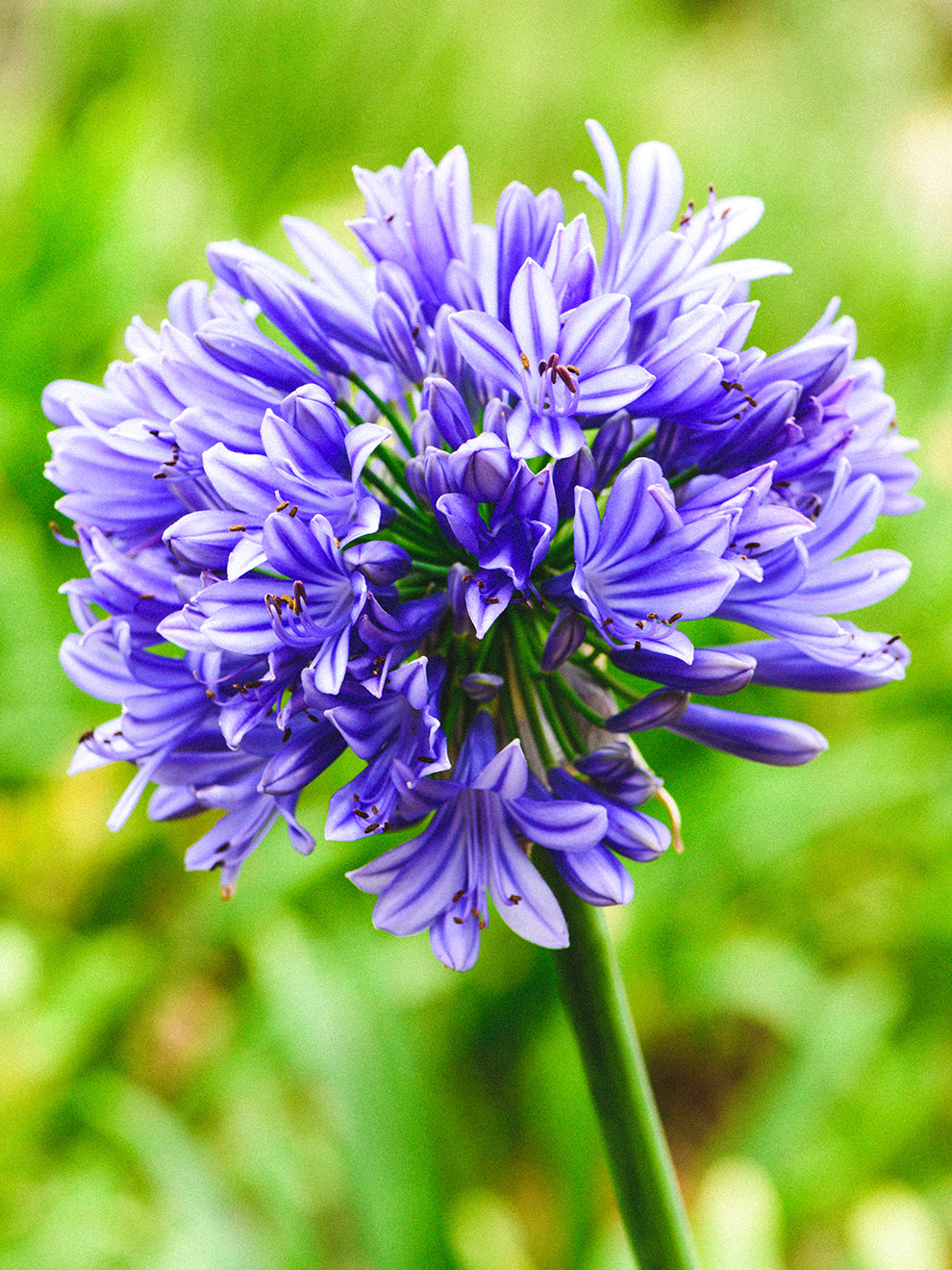How to Plant and Maintain Agapanthus in Your Garden
How to Plant and Maintain Agapanthus in Your Garden
Blog Article
Letting Loose the Secret to Effective Agapanthus Growing: Tips and Tricks for a Flourishing Garden
In the world of horticulture, growing agapanthus effectively requires a strategic strategy that incorporates numerous elements of plant treatment. With careful attention to detail, one can open the secrets to nurturing these magnificent blooms, resulting in a yard that grows with charm and vibrancy. By comprehending the subtleties of agapanthus growing, one can develop a setting where these plants grow and grow generously. In the following conversation, we will certainly discover crucial suggestions and tricks that will certainly assist you in the direction of a growing agapanthus garden, supplying insights right into ideal methods, soil conditions, watering strategies, and extra.
Growing Agapanthus: Best Practices
When growing Agapanthus, correct soil prep work is important for making certain successful growth and advancement of these gorgeous blossoms. Agapanthus, typically referred to as Lily of the Nile or African lily, prospers in well-draining soil with a slightly acidic to neutral pH level - Agapanthus. Prior to growing, it is essential to change hefty clay soils with raw material such as garden compost or peat moss to improve drain and supply necessary nutrients for the plants
To plant Agapanthus, select an area that receives full sunshine to partial color, as this will certainly promote healthy and balanced growth and bountiful blooming. Dig a hole twice the diameter of the plant's root sphere and position the Agapanthus at the very same depth it was previously growing. Delicately backfill the opening with soil, pushing down firmly to remove any type of air pockets around the roots.
Water the recently grown Agapanthus thoroughly and proceed to maintain the dirt equally wet, especially during the plant's active expanding season. Agapanthus. Applying a balanced fertilizer once a month can even more support the plant's growth and flowering. By adhering to these ideal methods for growing Agapanthus, you can produce a sensational display screen of these captivating blossoms in your yard
Perfect Dirt Issues for Agapanthus
For ideal growth and growing success of Agapanthus plants, guaranteeing the dirt problems are ideal is crucial. Agapanthus favors dirt that is rich in nutrients, so including a balanced fertilizer during the growing period can promote healthy and balanced growth and vivid blossoms.

Watering and Fertilizing Tips
To make certain healthy and balanced development and vibrant blooms, proper watering and feeding strategies are essential for effective Agapanthus farming. Agapanthus plants take advantage of normal watering, specifically throughout the expanding season. It is suggested to water deeply once a week, making certain the dirt is wet yet not saturated. Throughout warm weather condition or in pots, more regular watering might be required to avoid the soil from drying out entirely.
When it involves fertilizing Agapanthus, a balanced plant food with equal parts nitrogen, phosphorus, and potassium can be used in the springtime to promote healthy and balanced development and flowering. Slow-release plant foods are suitable for providing nutrients visit homepage progressively over an extended period. Stay clear of over-fertilizing, as this can cause excessive vegetation growth at the expenditure of flowers.
Furthermore, incorporating organic issue like compost right into the soil can enhance nutrient degrees and enhance dirt structure, aiding in the general health of the Agapanthus plants. By complying with these watering and fertilizing tips, garden enthusiasts can ensure their Agapanthus plants prosper and produce magnificent screens of blossoms.
Pruning and Deadheading Strategies
Proper trimming and deadheading techniques play a critical duty in preserving the health and aesthetics of Agapanthus plants, matching the important methods of watering and feeding for effective farming. Pruning Agapanthus includes removing spent blossom heads, dead or yellowing fallen leaves, and general shaping of the plant to advertise better development. Deadheading, the process of eliminating discolored blossoms, not just enhances the plant's appearance yet also motivates additional growing.
When deadheading Agapanthus, it is recommended to trim off the blossom stem at the base utilizing sharp, tidy shears. This procedure reroutes the plant's power from seed manufacturing back into root and vegetation development, promoting a healthier and much more durable plant. Normal deadheading can extend the flowering duration of Agapanthus and prevent self-seeding, which can result in congestion.
In regards to trimming, Agapanthus generally benefits from a light trim after flowering to clean the plant and motivate fresh growth. Reducing back the invested flower stems and removing any kind of damaged or dead foliage assists preserve the plant's vigor and total look. Nevertheless, it is necessary to prevent reducing into the crown of the plant, as this can deteriorate its wellness.

Protecting Agapanthus From Vermins and Diseases
Carrying out efficient insect and disease monitoring approaches is critical to protecting the health and vigor of Agapanthus plants in growing. Agapanthus are advice typically sturdy plants, however they can still succumb different bugs and illness if not effectively taken care of. One common bug that affects Agapanthus is the Agapanthus borer, a caterpillar that passages into the plant, triggering damage to the fallen leaves and flowers. To stop invasions, regular examination of the plants is crucial. If borers are detected, they can be manually eliminated, or go to this website insecticidal soap can be utilized as a control measure.
In enhancement to bugs, Agapanthus are at risk to conditions such as origin rot and fungal fallen leave areas. By staying alert and attending to bug and disease issues quickly, gardeners can help their Agapanthus thrive and flourish.

Final Thought
Finally, effective cultivation of agapanthus calls for proper growing techniques, suitable soil problems, adequate watering and feeding, normal pruning and deadheading, and defense from pests and illness. By adhering to these suggestions and methods, garden enthusiasts can ensure a growing yard full of gorgeous agapanthus blossoms. Agapanthus. Remember to preserve regular treatment and attention to detail to advertise the wellness and longevity of these sensational plants
When growing Agapanthus, correct soil preparation is necessary for ensuring successful growth and advancement of these attractive flowers.Water the newly planted Agapanthus completely and proceed to maintain the dirt evenly moist, especially during the plant's active expanding period.For optimal development and blooming success of Agapanthus plants, ensuring the soil problems are ideal is essential. When planting or hair transplanting Agapanthus, ensure the dirt is well-prepared to offer the essential foundation for the plants to develop themselves efficiently. One typical bug that impacts Agapanthus is the Agapanthus borer, a caterpillar that passages right into the plant, creating damages to the fallen leaves and blossoms.
Report this page